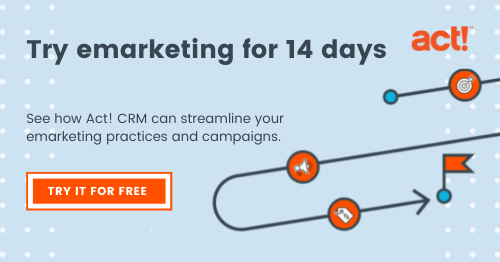
Have you ever subscribed to an email campaign through a form that says simply “Sign up for our newsletter?” What did you expect to receive? If you received more email than you expected, or content that you weren’t interested in, you likely quickly unsubscribed or hit the spam button. After an experience like that, would you still subscribe to those kinds of forms? Not likely. No one has time for unwanted email.
Vague subscription forms are used all too often in marketing automation strategies, with little thought given as to how they may impact marketing effectiveness. If you don’t set expectations explicitly, your subscribers will set them for you, and you can’t meet expectations you aren’t aware of. Forms without clear expectations will cause an increase in spam complaint rates and unsubscribe rates, and can even compel an otherwise interested person to not subscribe at all. Setting expectations is also a fundamental part of obtaining explicit permission, which, along with other best practices for email marketing, will keep your spam complaints down and your email landing in the inbox.
How to set expectations
Setting expectations at the time of opt-in isn’t all that hard, just make sure your subscription forms intentionally communicate these three elements of recipient expectations:
- Content – What kind of information will your emails contain? Will it be product updates, promotions, industry news, instructional content, or a combination of topics? Be specific and highlight the value your subscription provides.
- Frequency – How often will you send email? Is this a monthly newsletter or daily promotion? Subscribers want to know how much of their attention they will be allocating. Defining this on your subscription form also has the side benefit of forcing you to define it for your campaigns. Leaving it open ended in either place is just like asking for spam complaints and unsubscribes.
- Identity – Who will the emails come from? The domain you send from, your company logo, colors, etc. should all be clearly communicated, but that doesn’t mean you need to spell it all out. This information is often sufficiently implied – if the form is on your website with your branding visible, and you’ll be sending email from the same domain, you’re good to go. If the form is hosted on an affiliate or partner site, or if you’ll be sending email from a domain that doesn’t match your website, make sure you express that clearly so recipients know what to expect.
With all three of these aspects, you’ll need to strike a balance between style and function. No one wants a paragraph to read about what you’ll be sending. Keep it concise, but informative. Do you have multiple campaign subscriptions available? Use separate checkboxes on the same form with descriptions for each campaign.
The other half of the coin
Of course, once you set clear expectations, you still need to meet them in order to avoid generating excessive spam complaints and unsubscribes. This implies that you are segmenting your subscribers based on their interests and what they signed up for, and not using opt-in as a green light to send whatever you want, whenever you want. The ability to cater to your subscriber’s individual interests is one of the major benefits of email marketing, so take advantage. By setting and meeting the expectations of your email subscribers, you’ll get more email to the inbox, better engagement from your recipients, and you’ll get to set the tone for the way you run your business.






